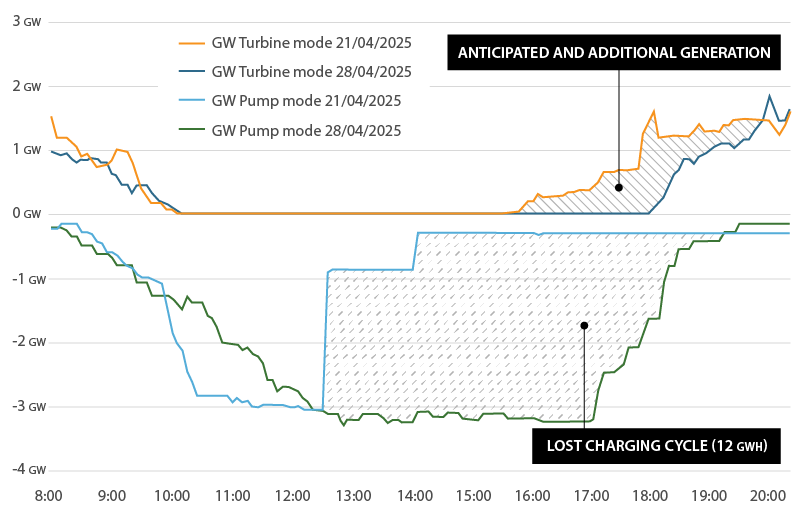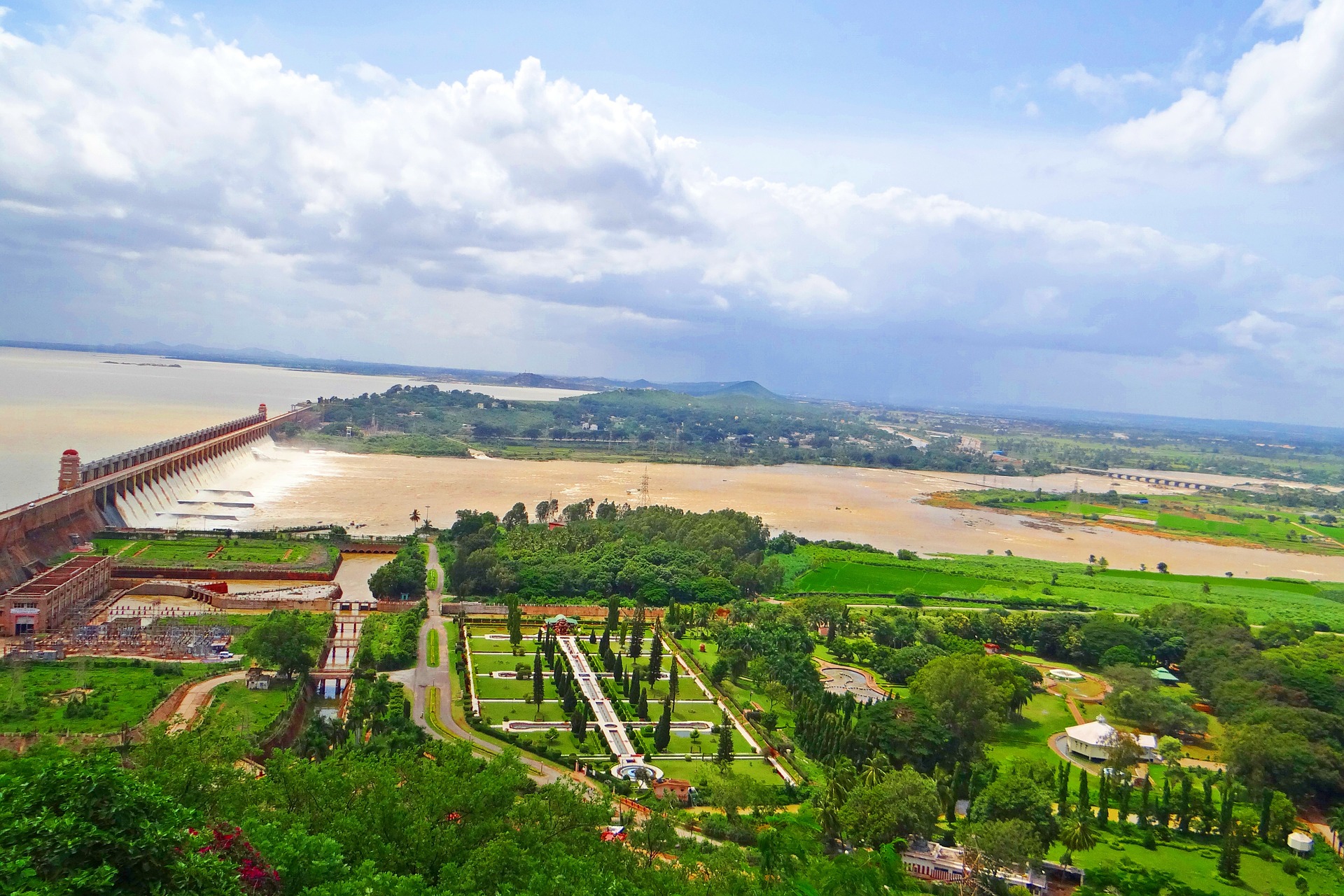Unlocking the value of Hydro Pumped Storage after the Iberian blackout
The following article is authored by Iberdrola
The installed capacity in the Spanish peninsular system is 128.1 GW1, of which 88.8‚ÄĮGW (69.3%) are characterised as renewable. Within this mix, hydropower represents 15.9%, which translates into a total of 20.4 GW, of which 5.8‚ÄĮGW2 corresponds to pumped storage hydropower (PSH). PSH, which makes up less than 5% of the total mix, is currently the only technology that can store surplus electricity as potential energy and release it when needed.
There is no doubt that the Iberian energy mix has undergone a profound transformation in recent years, making Spain a reference point in the global shift to clean energy. Spain has not only demonstrated leadership in the integration of renewable energy but has also become a source of inspiration for other nations observing with interest the solutions we are implementing to address shared challenges.
The push for renewables - central to decarbonisation, sustainability and energy security - has also brought technical challenges. One of them comes from the high penetration of renewable energies, as stated in the preamble to Royal Decree-Law 8/2023 of 27 December, which states: "The commitment to these energies is producing the desired effect in terms of the construction and entry into operation of new wind farms and photovoltaic plants, fundamentally. But these renewable energies, given their variability, are not manageable and are not adequately matched to the demand for electricity, which together with their lack of synchronicity could put the security of the peninsular electricity system at risk".

Importantly, the Royal Decree removes barriers that had limited PSH from helping integrate renewables effectively. It also reminds us that, in addition to playing to the favourable characteristics in Spain (geography and the existence of numerous reservoirs), PSH is a mature technology that supports decarbonisation, reduces dependence on energy imports, improves system resilience, stability, efficiency, flexibility and mechanical inertia.
In addition to these benefits, PSH plays a crucial role in optimising investments in grid infrastructure. It provides black start capability independent of hydrological conditions or daily cycles, supports the European supply chain, and drives local economic development -an increasingly important factor in the delivery of complex infrastructure projects. In some cases, PSH can also support water management, helping to mitigate the impacts of droughts and floods.
On 28 April, we witnessed an event that was once considered improbable. However, as highlighted in the Royal Decree, it reflected a known risk. Without going into technical detail -beyond the scope of this article - it is clear that system security was compromised. This reinforced the relevance of PSH in helping Spain meet its 22.5 GW3 long-duration storage target under the National Energy and Climate Plan (NECP).
Besides showing that ‚Äúblack swan‚ÄĚ events, however unlikely, can nevertheless happen, the incident also highlighted the critical role of PSH - especially in terms of its operational flexibility and capacity to support system restoration.
PSH flexibility -defined as the ability to adapt quickly to changing conditions‚ÄĒwas clearly demonstrated on 28 April. Compared to the previous Monday (21 April), the pumping cycle on that day followed a similar pattern until 12:33, when it was abruptly interrupted. This prevented the storage of over 12 GWh before the next scheduled generation cycle. Despite the reduced recharge window, PSH units anticipated their generation cycle and were able to deliver 11 GWh4 of electricity before the end of the day.

This example shows that long-duration storage, in addition to providing flexibility, is essential to ensure reliable system response at any time of day. PSH offers stored energy that can be dispatched when it’s most needed.
PSH also plays a unique role in restoring power after a major system failure. Thanks to their design, many hydro plants can provide auxiliary power without relying on the grid. Equipped with black start capabilities, they are often designated in grid restoration plans to initiate recovery in key zones. These units supply power not only to the grid but also to other generation facilities which, without this initial power supply, would not be capable of restarting their operations.
While some restarts require external intervention, Iberdrola’s first PSH unit was operational within 10 minutes, and more than 70% of the fleet was online in under two hours.5
Among Iberdrola’s 13 PSH facilities, Puente Bibey, Aldeadávila II, Villarino, and La Muela I and II were instrumental during the early recovery phase. Together, with a capacity of 2,785 MW, they generated over 9 GWh by the end of the day, significantly contributing to regional service restoration.
In the northwest, Puente Bibey was assigned by the grid operator to stabilise its local electrical island, injecting power into the 220 kV grid and the internal 20 kV network. Meanwhile, Conso PSH was kept on spinning reserve, ready to support the system if needed.
In the Duero River basin‚ÄĒcovering northwestern and central-northern Spain‚ÄĒthe Duero‚ÄďFrance restoration plan was activated. Aldead√°vila II and other PSH units were black started to provide auxiliary power to nearby hydro plants, allowing them to reconnect to the grid.
In the Mediterranean region, once auxiliary services were re-established, the Cortes hydropower plant was brought online, followed by La Muela PSH, which generated 4.7 GWh by the end of the day.
Despite the complexity of the situation, the coordinated efforts of system operators, generators, distributors, and contractors enabled full restoration. This collaboration demonstrated the resilience and capability of Spain’s electricity sector.
We call for revenue stabilisation mechanisms and urge for legislative proposals to address the specifics of hydro pumped storage. It is essential to prevent future funding, like the recent allocation of ERDF funds in Spain, from being disproportionately directed toward battery projects. Only technologically neutral incentives that accommodate commercial operation dates compatible with PSH development can unlock its full potential and ensure that today’s investments deliver the infrastructure needed by future generations.
Enrique Sola and David Rold√°n
‚ÄćFootnotes:
[1]  Monthly electricity bulletin: April 2025: 124,737 MW plus 3,331 MW of "Turbine pumping".
[2] Prepared by the authors on the basis of the capacity recorded in the RAIPEE of the facilities TANES, BOLARQUE, AGUAYO, GUILLENA, TAJO DE LA ENCANTADA, ESTANY GENTO-SALLENTE, MONTAMARA, MORALETS, IP, ALDEADAVILA II, CONSO, GABRIEL Y GALAN, GUIJO DE GRANADILLA, LA MUELA, LA MUELAII, PUENTE BIBEY, TORREJON, SANTIAGO-JARES, SOUTELO, VALDECA√ĎAS, VALPARAISO and VILLARINO. 64%Iberdrola. 23% Endesa. 13% Repsol, Naturgy, EDP and Acciona.
[3]  PNIEC_2024_240924.pdf pg.29. By allocating the 10 GW of seasonal storage to HPS, the current fleet of 5.8 GW would need to be increased by 4.2 GW.
[4] Own elaboration with data from Real-time electricity demand, generation structure and CO2 emissions.
[5] Iberdrola operational data.










